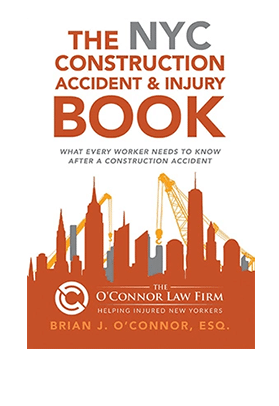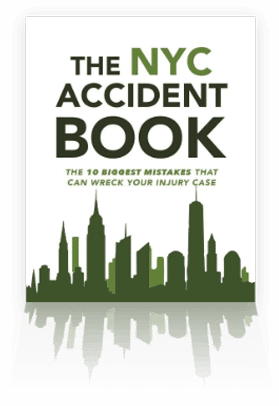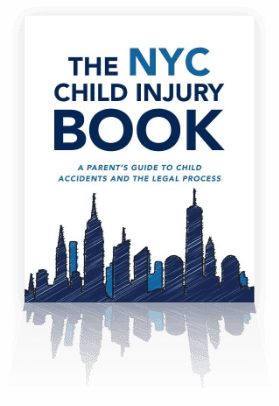Staten Island Distracted Driving Accident Lawyer
Hurt by a Distracted Driver? Get a Free Case Evaluation from Our Staten Island Distracted Driving Accident Lawyer
One of the most common causes of motor vehicle accidents in the United States is distracted driving. Statistics reveal that distracted driving results in over 3,500 fatalities and 424,000 injuries each year in the United States. Unfortunately, New York ranks the ninth-worst state for distracted driving, which results in roughly 12% of all fatal crashes in the Empire State. Despite efforts by state government to curb distracted driving, numbers continue to increase in New York – even though some researchers believe the true figures are actually much higher than what is reported or determined after an accident. This is particularly true for teen drivers, where almost 60% of all accidents studied were caused by some type of distraction. Even though the statistics are troubling and the facts of a crash may be obvious, defendant lawyers and insurance adjusters will still make victims fight for compensation in a distracted driving crash. If that happens to you or a loved one, contact a Staten Island distracted driving accident lawyer for help.
Here at the O’Connor Law Firm, our compassionate and experienced legal team offers victims and their families a free case review to learn more about their rights following a distracted driving crash in Staten Island or anywhere else in the New York City area. Unlike other bodily injury law firms, cases are handled in-house by an experienced lawyer – not a new graduate. Our Staten Island distracted driving accident lawyer also understands that all cases are unique, and does not adopt a cookie-cutter approach. Rather, all cases are addressed on their merits, victims and their families are heard, and their wishes are pursued within the bounds of the law. If you were injured in a distracted driving crash in New York, especially in Staten Island, call to schedule your free appointment.
What is Distracted Driving?
Although most people think that distracted driving is just using a cell phone while driving, what is distracted driving is actually much broader. The term applies to any type of distraction that occurs to a driver while operating a motor vehicle. Generally, distractions are broken down into three types:
- Visual – distractions that pull a driver’s eyes off of the road
- Cognitive – distractions that pull a driver’s focus away from driving, and
- Physical – distractions that pull a driver’s hand or hands off the wheel.
All distractions are dangerous. However, the most dangerous distractions are those which cause two or sometimes all three of the distractions. This specifically includes texting while driving, which creates visual, cognitive, and physical distractions for a driver.
Examples of Distracted Driving in Staten Island
There are many different types of distracted driving. In fact, many drivers do not realize that they are guilty of engaging in distracted driving every day. Statistics indicate that as many as 30% of car accidents that occur each day are caused by distracted driving. However, most distractions that we typically experience are minimal and even inherent to driving (i.e., looking for a street sign). But there are other types of distractions that are much more significant and dangerous, some being obviously illegal to do while operating a motor vehicle.
Some of the most common examples of distracted driving include the following:
- Texting while driving
- Using a GPS, whether a handheld one or programming into a built-in one
- Engaging with passengers, especially children
- Using the cell phone to make a telephone call
- Eating while driving
- Playing with a pet
- Using a map
- Sending an email or reading an email
- Playing with the radio or changing stations, programming stations, or otherwise using the interface
- Changing car settings such as mirrors, seats, or other vehicle functions
- Shaving or styling hair
- Putting on makeup
- Buttoning clothing or getting dressed (i.e., putting on a tie)
- Cleaning the car, such as wiping up a mess or spill
- Playing a game while driving, crawling forward slowly, or waiting in traffic (i.e., Pokemon Go)
- Writing or reading, including taking notes while driving such as while listening to an audiobook, and
- Engaging in other behaviors that result in a distraction and a Staten Island distracted driving accident.
Liability for Distracted Driving Car Accidents in New York
A victim of a distracted driving car accident will need to prove liability, or fault. There are several ways to prove liability, but all revolve around asserting a cause of action (or claim) against a defendant. Most causes of action are based on negligence, or the common law (judge-made law) principle requiring everyone to use reasonable care in the use or operation of a motor vehicle. However, certain statutes and regulations can be used to also assert claims that a driver was negligent by failing to comply with a law or rule that was meant to prevent a car accident.
Due to the fact that there are different ways to prove liability, there are also different considerations for each that victims and their families must take into consideration. Since New York law allows a party to have “alternate pleadings,” or assert different claims all in one lawsuit, your Staten Island distracted driving accident lawyer will allege as many different possible claims as may be applicable based on the facts.
Common Law Negligence
Nearly all personal injury cases will be based on negligence. This is particularly true of motor vehicle accidents, especially those involving distracted driving. Negligence is not a written down law, but it is a rule of law that has evolved over the years in judicial decision-making which follows public sentiment.
Generally, in order to hold a defendant negligent for a distracted driving car accident, a victim will need to establish the following:
[Defendant had a Duty
First, a victim will need to establish that the defendant owed a duty of care to the victim. This is usually easily established because all motorists owe others on or around the roadway a duty of reasonable care in the use or operation of a motor vehicle. This duty requires drivers to “see what there is to be seen” when operating a motor vehicle. Although drivers do not need to be perfect, they need to drive as a reasonably prudent person would have in similar circumstances. Thus, all drivers owe this duty to other drivers, pedestrians, bicyclists, or any other person or business on or near a roadway.
Defendant Breached that Duty
Second, a victim will need to establish that the defendant breached his or her duty of care owed to the victim. Generally, a distracted driver is not a safe driver, and is likely violating this duty. That is particularly true if the driver fails to stop in time and rear-ends another motorist, or is texting while driving and crossed into another lane. Although it can be difficult to prove that a driver was distracted at the time of the accident, the police investigation and discovery in a lawsuit, such as depositions, can determine the case. Other times of investigations such as subpoenaing a telephone company, reviewing video footage, or speaking with witnesses can also uncover instances of distracted driving.
Defendant Was a Substantial Factor in Causing the Accident
Third, a victim will also need to prove what is known as “causation.” This is where many distracted driving car accidents will be fought, as the first two elements are usually clearly established in a distracted driving accident. However, causation is not always as clear, as a defendant may even try to blame victims for their comparative fault or even blame a third-party.
In order to establish causation, a victim will need to establish that a defendant was a substantial factor in causing the crash. This does not mean the sole cause, but just a substantial cause. Distracted driving often is that cause, as it is outright dangerous, victims will usually be able to establish this element.
Damages to the Victim
Finally, a victim will need to establish “damages.” In law, the term damages refers to the relief that a party can obtain in a legal action. In personal injury cases, damages are typically awarded as monetary compensation. This compensation can be for a variety of different types of harm, including the following:
- Past pain and suffering
- Future pain and suffering
- Medical bills
- Lost wages
- Lost future earnings
- Loss of consortium
- Punitive damages (rare)
- Home or vehicle modifications
- Need for nursing care
- Wrongful death, including burial costs and funeral expenses, and
- Other types of serious personal injuries due to a Staten Island distracted driving accident.
Doctrine of Negligence Per Se
In addition to common law negligence, a victim can prove a distracted driving accident case by relying on the violation of a statute to establish the first two elements of “duty” and “breach of duty.” Indeed, the doctrine of negligence per se automatically creates liability in distracted driving cases in certain instances.
In order to rely on the doctrine of negligence per se, a victim must prove:
- Defendant violated a statute
- The violated statute was meant to prove the class of persons that the victim was in, and
- The violated statute was meant to prevent the harm that the victim suffered.
Although there are some defenses to this doctrine, a victim can often use negligence per se to help pressure a case to settle favorably. This includes when a defendant engages in conduct such as using a cell phone to make a call while driving (violates VTL section 1225-c) or texts, sends an email, plays a game, or otherwise uses a mobile device while operating a vehicle (violates VTL section 1225-d).
Negligence Per Se and Regulations
Although negligence per se is an automatic finding of liability against a defendant who violates a statute, it is not an automatic finding against a defendant who violates a regulation. Rather, it is only “evidence of negligence” against a defendant that violates a regulation. This is relevant in trucking accident cases, as the Federal Motor Carrier Safety Administration (FMCSA) regulations strictly prohibit a defendant from texting while driving.
Were You Injured in a Staten Island Distracted Driving Accident? Call the O’Connor Law Firm
If you or a loved one were injured in any type of motor vehicle accident and the defendant was either distracted or may have been distracted, call our Staten Island distracted driving accident lawyer at the O’Connor Law Firm. Although a police report may help you and your family prove this type of claim, it also may not be as helpful as you expect. Further, a police report may only help you prove some of the elements and not all of them that are required under the law.
To learn more about your rights and how our car accident lawyer can help you and your family recover compensation, call to schedule a free case evaluation today by dialing (718)-948-3500 or by sending us an email through our “Contact Us” box available here. Our legal team is available and ready to help you and your family protect your rights under New York law.




